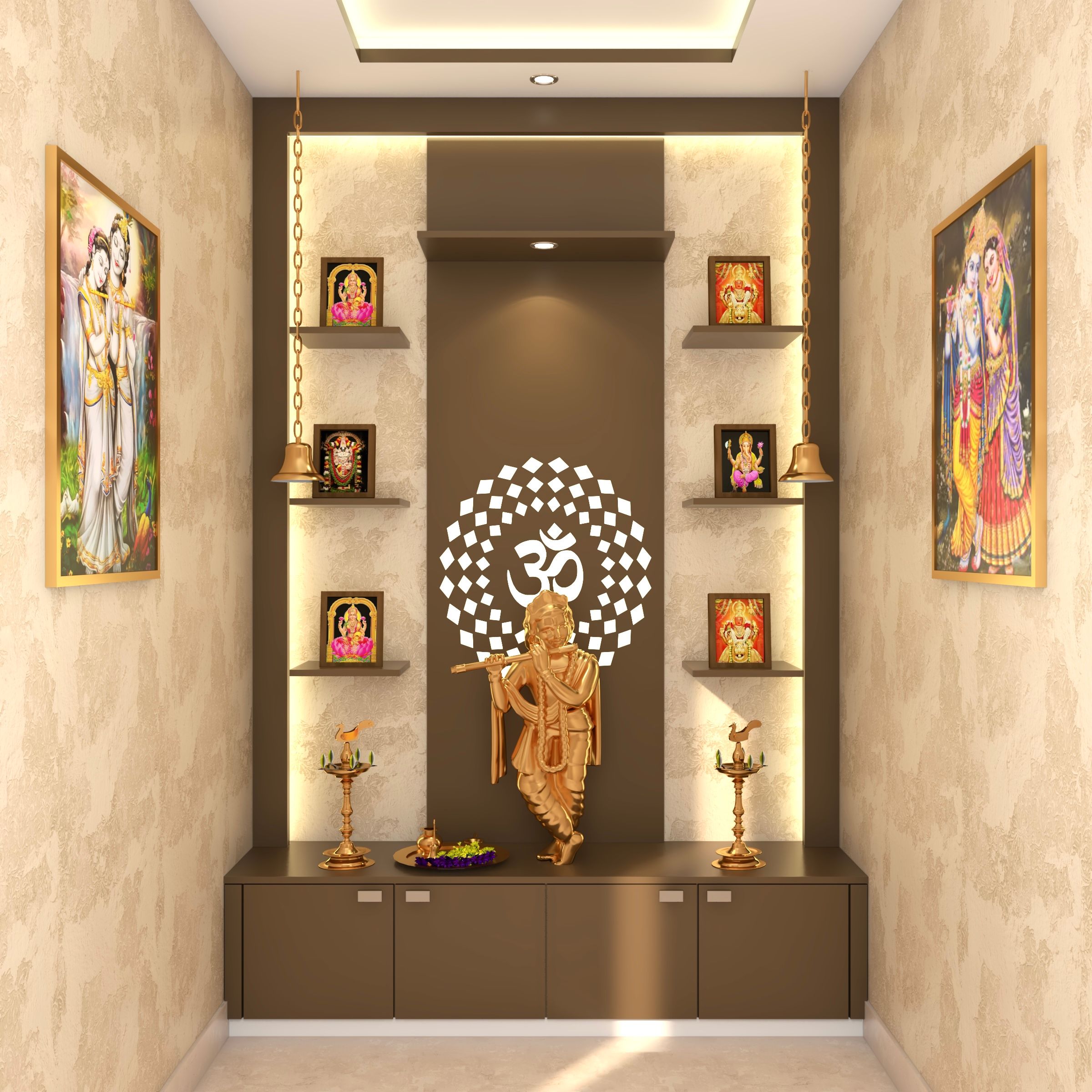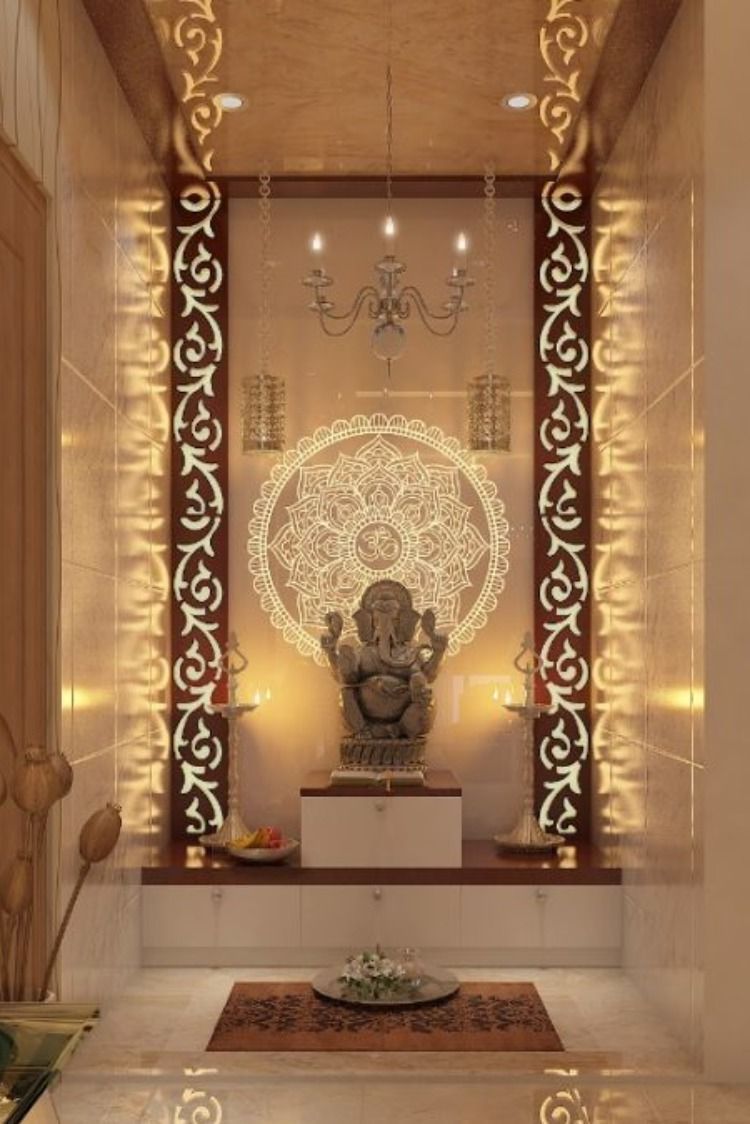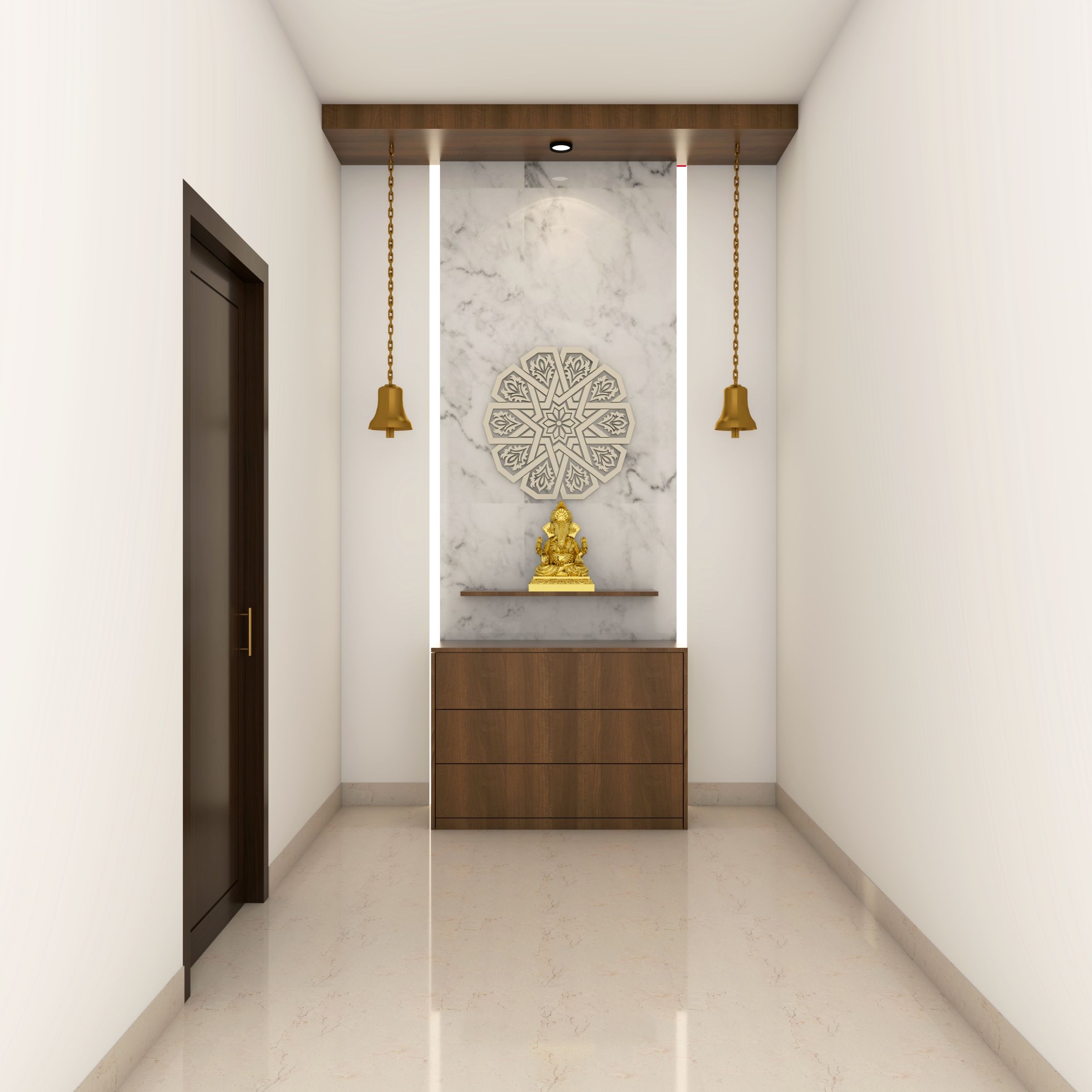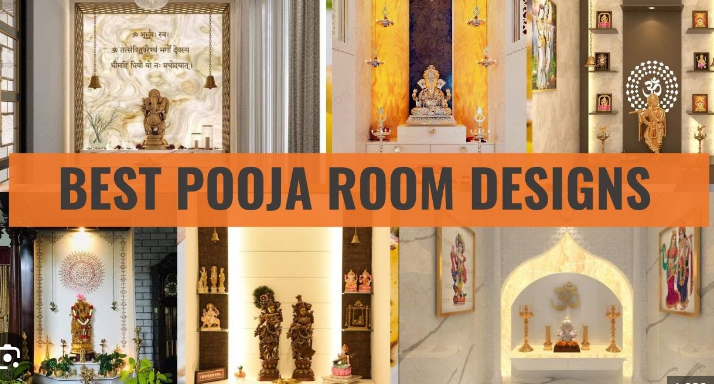Indian pooja rooms can be designed in various styles, each reflecting different regional and cultural aesthetics. Here are some popular types of Indian pooja room designs in detail:
1. Traditional South Indian Pooja Room

- Materials: Teak wood or rosewood for the mandir, often with intricate carvings of deities and symbols.
- Idols: Typically large, detailed idols made of brass, bronze, or granite.
- Decor: Rich use of brass lamps, hanging oil lamps, and colorful kolams (rangoli patterns) on the floor.
- Storage: Wooden cabinets or shelves to store pooja items and traditional musical instruments like the nadaswaram and mridangam.
- Features: Emphasis on rituals, often with a dedicated space for performing abhishekam (ritual bathing of deities).
2. North Indian Pooja Room

- Materials: Marble is commonly used for the altar and flooring, providing a clean, pristine look.
- Idols: Smaller idols made of marble, brass, or silver, often placed in a tiered mandir.
- Decor: Use of bells, colorful fabric backdrops, and framed pictures of deities.
- Storage: Built-in shelves or cupboards for storing pooja items.
- Features: Focus on simplicity and elegance, often with a designated space for keeping sacred texts and performing aarti (ritual of light).
3. Contemporary Pooja Room

- Materials: Modern materials like glass, metal, and polished wood.
- Idols: Sleek, minimalist idols made of metal or contemporary designs.
- Decor: Clean lines, minimalistic decor, and use of LED lighting for a modern touch.
- Storage: Concealed storage solutions to maintain a clutter-free look.
- Features: Integration with the overall modern design of the home, often with a dedicated nook or corner.
4. Rustic Village Style Pooja Room

- Materials: Natural materials like stone, clay, and raw wood.
- Idols: Earthen or terracotta idols, often hand-painted.
- Decor: Use of traditional village crafts, handwoven fabrics, and simple brass lamps.
- Storage: Open shelves made of wood or bamboo.
- Features: A simple, earthy feel with natural ventilation and a focus on traditional rituals.
5. Palatial or Royal Pooja Room
- Materials: Luxurious materials like marble, gold leaf, and precious stones.
- Idols: Large, ornate idols often adorned with jewelry and fine fabrics.
- Decor: Grand chandeliers, silk curtains, and detailed frescoes on the walls.
- Storage: Elegant wooden cabinets with intricate carvings and inlay work.
- Features: A regal, opulent look with elaborate rituals and offerings.
Also read: How to Choose the Right Paint Colors for Your Home
6. Minimalist Pooja Room

- Materials: Simple materials like plain wood, glass, and muted colors.
- Idols: Small, simple idols or framed pictures of deities.
- Decor: Minimal decor, focusing on functionality and simplicity.
- Storage: Hidden or compact storage solutions.
- Features: A clutter-free, serene environment with a focus on meditation and personal worship.
7. Wall-Mounted Pooja Shelf
- Materials: Wood, metal, or glass shelves mounted on the wall.
- Idols: Small idols or framed pictures.
- Decor: Simple, with a few essential pooja items like a diya, incense holder, and a small bell.
- Storage: Compact storage beneath the shelf or in a nearby cabinet.
- Features: Ideal for small spaces or apartments, maintaining the sanctity of a pooja space in a limited area.
8. Portable Pooja Mandir
- Materials: Lightweight wood or metal, designed for easy movement.
- Idols: Small, portable idols.
- Decor: Compact and functional, with essential pooja items.
- Storage: Integrated storage for pooja items within the mandir.
- Features: Flexibility to move and set up the pooja space as needed, suitable for temporary setups or for those who move frequently.
Design Tips for All Styles
- Lighting: Soft, warm lighting is crucial in creating a peaceful ambiance. Use a combination of natural and artificial light.
- Ventilation: Ensure proper ventilation to disperse the smoke from incense and diyas.
- Cleanliness: Regular cleaning and maintenance are essential to keep the space pure and sacred.
- Personal Touch: Incorporate elements that resonate with your personal beliefs and practices.
By considering these diverse styles, you can choose or combine elements to create a pooja room that aligns with your cultural background, personal taste, and the overall design of your home.
Also read: 10 Most Kitchen Accessories That You Have In Your Kitchen
https://www.livehomes.in/blogs













